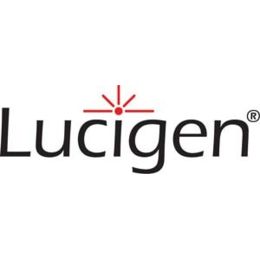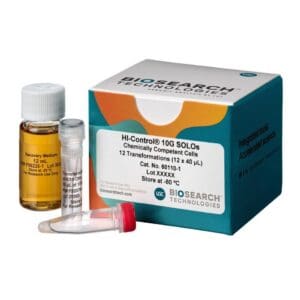
Random insertion of a selectable marker for sequencing and functional analysis
- Insert a kanamycin, tetracycline, or DHFR selectable marker into any DNA sequence in vitro
- Skip primer walking – simplify Sanger sequencing of large DNA inserts
- Speed functional analysis without subcloning – create libraries of random mutants from purified DNA
- Minimize insertion bias with the hyperactive Tn5 system, known for highest level of randomness
| Name | SKU | Size | Availability | Vendor | Price | Order | |
| EZ-Tn5™ |
EZI912D | 10 Rxns | Generally 1-2 weeks from receipt of order | LGC Biosearch Technologies - Lucigen (Epicentre) | Log in for pricing |
Applications
- Completely sequence cDNA or genomic clones in plasmid, cosmid, fosmid, or BAC vectors without subcloning or primer walking.
EZ-Tn5™ Insertion Kits* are designed to simplify and speed up complete sequencing of any cloned DNA >2 kb, without primer walking or subcloning. A simple, one-step in vitro reaction results in random insertion of a single EZ-Tn5 Transposon containing a selectable marker—either kanamycin resistance (KAN), tetracycline resistance (TET), or trimethoprim resistance encoded by the dihydrofolate reductase gene (DHFR)—into the clone. Then, transform E. coli cells with an aliquot of the reaction and select for the marker encoded by the EZ-Tn5 Transposon. Use the primers provided in the kits to sequence insertion clones bidirectionally from primer binding sites at the ends of the inserted transposon (Fig. 1).
Benefits
- The high degree of randomness ensures that the primer binding sites are distributed throughout the clone,1 ensuring much better sequence coverage compared to primer walking or subcloning.2,3
- A single reaction generates up to 106 insertion clones—enough to sequence even the largest clone and saving the time usually spent subcloning or designing and synthesizing sequencing primers.
- Use a single set of sequencing primers (provided in the kits) to completely sequence any clone.
- The EZ-Tn5 System can be used for processing multiple DNA samples, making it an effective component of a high-throughput sequencing pipeline.4
References
- Goryshin, I. Y. and Reznikoff , W. S. (1998) J. Biol. Chem. 273, 7367.
- Meis, R. (2000) Epicentre Forum 7(4), 5.
- Shevchenko, Y. et al. (2002) Nucl. Acids Res. 30, 2469.
- Shevchenko, Y. et al. (2001) Epicentre Forum 8(2), 14.




